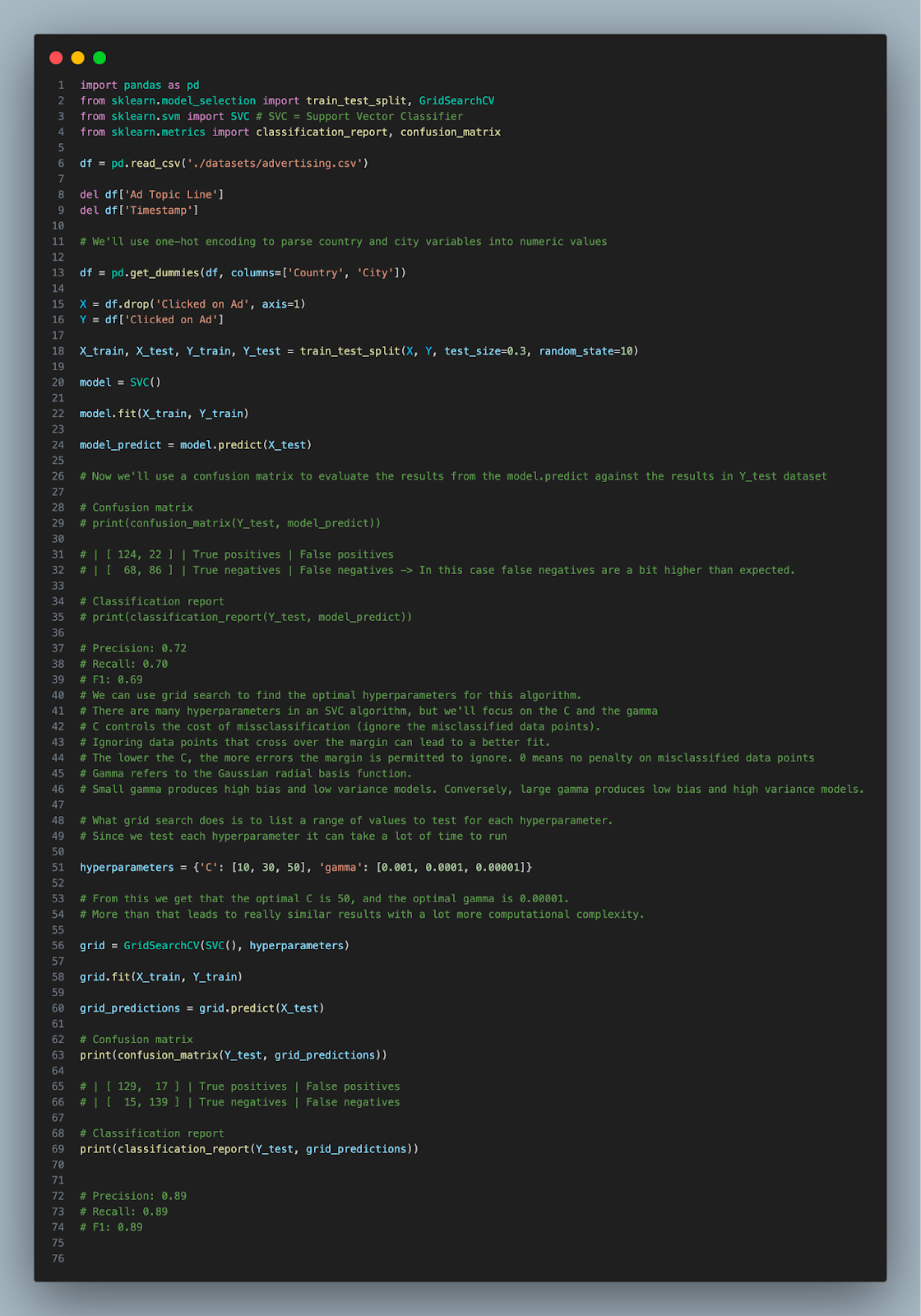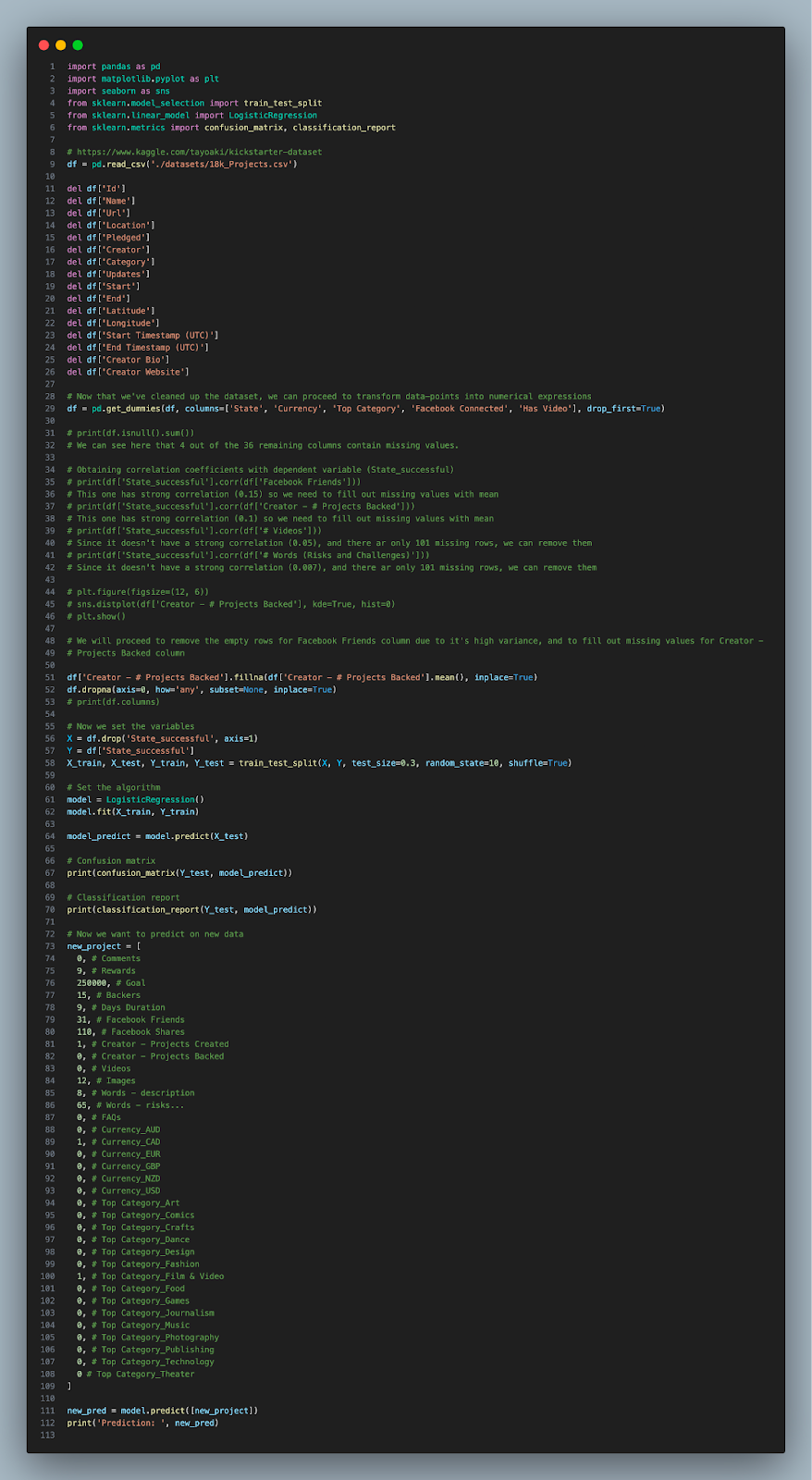Leveraging the power of Machine Learning
Speed is critical for businesses to succeed. And, with the advancement of Machine Learning (ML) and Artificial Intelligence (AI), companies can leverage ML and AI to ship products to market faster and better. While closely intertwined (and frequently confused with one another), ML is a subset of AI. While AI is a high-level concept, Machine Learning is the practice of getting to an Artificial Intelligence with code and getting a system to learn from input data.
This blog explores the core concepts behind ML and how to put it to use effectively.
What Is Machine Learning?
Machine Learning a the way to use algorithms to train a program to learn from input data you provide, so that it can extract features and generate accurate predictions, without being explicitly coded for that. Despite being a little basic and maybe falling a little short (especially nowadays with all the hype around this topic) it fits the needs of this article.
As you can imagine, the more data you provide, the better the prediction you get. As a result, AI in general, and ML in particular have grown so rapidly. The computing breakthroughs (especially in the field of GPUs and how to use these for faster parallel computing) have paved the way for ML models to be trained with more and more data, which is why generative models (the ones that probably need the most data amongst all the ML models) are doing so well. The GPT-4 model is supposedly trained with 1.76 trillion (with a T 🤯) parameters.
How Machine Learning Works
Technically, the way these models work is by applying statistics, probabilities, and some algebra to map high-dimensional datasets into 2 or 3 dimensions. This allows humans to visualize data fully and understand the relationship between different parameters, and how they influence the whole dataset.
In practice, you’d want to go from using a model like this:

To something like this (just to illustrate a point, these two images have nothing in common with each other):

The final goal is to get to a system that can make predictions for a specific situation given a specific state. The machine creates a model (a mathematical model) that can produce an output based on the patterns that it extracted from the data provided.
Conceptually, there are three main types of Machine Learning models, supervised and unsupervised learning models, and reinforcement learning, and there are many different algorithms for each:
1. Supervised Learning: You act as a teacher to the model, and tell the machine which is the input-output combination you’re expecting, so through its calculations it can decipher underlying patterns in the data provided. As such, the data input is considered labeled data, which is, for example, providing an image of a dog and telling the model — “this is a dog” — and repeat this with a large amount of data. When you’ve trained the model with enough data, it will be able to separate a dog from other animals when being shown one or to predict the price of a used car given its characteristics.
Using a Supervised Learning model usually gets higher accuracy and more versatility (e.g., you can use these models for classification, regression, or object detection, among others). However, when relying only on the data you provide, which gives less flexibility (as the model tends to be designed for a specific task) and is not really good at generalizations. In response, the model perform rather poorly when being presented with new unseen data. Some common algorithms used in this approach are regression analysis, decision trees, k-nearest neighbors, neural networks, and SVMs.
2. Unsupervised Learning: You can use clusters or groups of similar data points to narrow the dataset, and build relations and patterns between the single entries of the provided dataset. This approach is great for discovering hidden relationships (e.g., Facebook’s people you might know algorithm) and it’s also really good at working with high-dimensional data (think of high-resolution images, that have many layers stacked on top of each other).
One caveat is that unsupervised learning algorithms are a little unpredictable since you don’t really know at first sight how the output was built. Also, the noise (how particularities in the distribution of the data points are referred to) in the dataset we provide can create unreliable results.
Some algorithms used in this approach are social network analysis, descending dimension algorithms, k-means clustering, and dim/feature reduction.
3. Reinforcement Learning: This is an important category of ML algorithms that do well on tasks such as game playing, robotics, or self-driving algorithms. It goes through a set of states from an initial one, and it’s rewarded (or not) at each state. The ML agent should try to either maximize or minimize (depending on what you want) that result when going through all the possible states (we can limit the iterations the agent should take).
There is one trade-off with these algorithms, which is exploration vs exploitation. You’ll need to balance between finding new moves or states and calculating the reward or yield on each of them. Some useful algorithms used in this approach are Q-learning and deep reinforcement learning.
It’s important to have a clear understanding of the various Machine Learning models in order to know how to put ML to use with AI.
How to use Machine Learning
As a first step, it’s best to determine what tools to work leverage, such as:
- Programming language: There are many alternatives to use here (practically every programming language that’s out there), but the go-to recommendation is to use Python, due to its large community, reasonable learning curve, and support. Some other alternatives are Java, C/C++/C#, R, Swift, Javascript, and Ruby. Below’s a comparison between them on some relevant topics.
- Data source: You need to define where the data is going to come from. Maybe you already have a database that you want to use here, but if that’s not your case, many websites offer free datasets. One option is https://www.kaggle.com/ where you can get datasets to work with and start learning how to program ML models.
- Algorithm: The algorithm you choose will be closely related to the problem you’re looking to solve with the structure and amount of data provided. For example, you could have a dataset with a few houses for sale in any given city, and their characteristics and you’d need to predict how much the next house will go for. For that particular problem and dataset, you should probably pick among any of the Supervised Learning algorithms mentioned above. Another example would be that you have a huge dataset with spam emails, and need to build a tool that will detect the next spam email based on the ones provided. For this particular problem, you could rely on any of the Unsupervised Learning algorithms mentioned earlier, since you need the machine to discover underlying patterns between all the spam emails.
- Infrastructure: To begin working in the field usually a personal computer is more than enough (you can bear a couple of minutes of waiting for a program to run). Once you start scaling, you can either build our own GPU cluster, or rely on distributed computing from a provider like Amazon, Google, or Microsoft.
- Code Libraries:
- TensorFlow: Built and maintained by Google, it supports a range of programming languages such as Python, JavaScript, and Swift. It provides most of the algorithms mentioned above, plus a lot of the tools needed to build ML models, like activation functions, and data splitting functions, among others.
- Scikit-Learn: Built by INRIA, made for Python. Much like Tensorflow, it provides practically every ML algorithm out there, and tools to work with them to build a model.
- Numpy: This library is a must if you want to build any Math-related model with Python. It provides practically every math function, especially for working with arrays and matrices. Built by NumFOCUS, made for Python.
- Pandas: This library provides data structures to better handle and transform the datasets. It’s mostly used to prepare data before feeding it into the model. And, it’s built by NumFOCUS for Python.
- Pytorch: This is the Facebook version of TensorFlow. Really intuitive and easy to use, and provides all the tools to work with ML models.
- Keras: This is a particular library that’s integrated into Tensorflow but that was built independently. It focuses on Neural Networks (mostly used for deep learning algorithms, which are a particular subset of unsupervised learning).

Lastly, let’s look at some code examples for some of the algorithms. The examples intentinally won’t be show any results and are intended to paint a picture of what the code to build a –simple– model looks like:
Decision Trees Algorithm:

K-Nearest Neighbors Algorithm:

Support Vector Machine Algorithm:

Logistic Regression Algorithm:

Get Machine Learning Up and Running
Machine Learning clearly has its advantages. At LaunchPad Lab, our team of experts can help instill best practices to ensure you make the most of your ML and AI investment. Schedule a consultation with one of our experts to get started today!
Machine Learning Resources
If you want to dig deeper into this topic and start building your own Machine Learning models, here are a recommended resource:
- Andrew Ng Machine Learning Course
- Scatterplot Press: Building a House Price Prediction Model
- A free course that teaches you how to build a prediction model.
- Machine Learning for Beginners, Instagram
- Instagram channel with Machine learning-related posts.
- Mathematics for Machine Learning
- This is a book to better understand what goes on behind the scenes.
- “Machine Learning with Random Forests and Decision Trees: A Visual Guide for Beginners”
- This is a book that goes through these patterns and helps visualize how they work.



